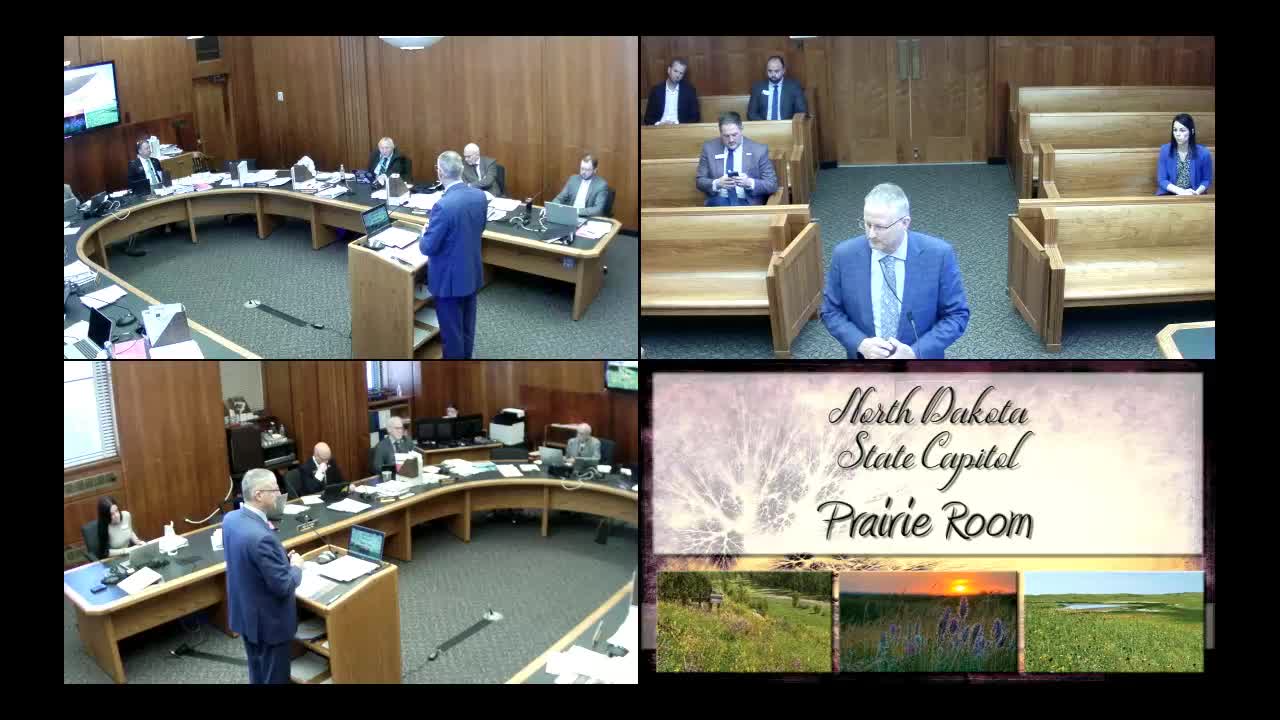North Dakota Bank outlines $130M taxpayer savings from 2% loan programs
March 25, 2025 | Appropriations - Education and Environment Division, House of Representatives, Legislative, North Dakota
This article was created by AI summarizing key points discussed. AI makes mistakes, so for full details and context, please refer to the video of the full meeting. Please report any errors so we can fix them. Report an error »

In a recent meeting of the House Appropriations Committee focused on Education and Environment, North Dakota legislators engaged in a detailed discussion about the implications of low-interest loans and lines of credit administered by the Bank of North Dakota. The meeting highlighted the financial impact of these loans on taxpayers and the management of state funds.
One of the central topics was the 2% loans provided for school construction and infrastructure projects. Representative Martinson raised concerns about the financial burden these loans may impose on taxpayers, questioning the total amount lost due to the difference between the 2% rate and what would be considered a normal market rate. The response indicated that the school construction revolving loan fund alone saves taxpayers approximately $130 million when comparing the 2% rate to a hypothetical 4% rate. This figure underscores the significant financial relief these loans provide, although it also raises questions about the sustainability of such low rates in the long term.
The committee also discussed the mechanics of lines of credit, which are utilized as cash management tools for various state agencies. These lines of credit allow agencies to access funds as needed, with the understanding that they will be repaid in future legislative sessions. The interest rate for these lines is set at a government rate, currently around 5.5%, which is 2% below the prime rate. Legislators expressed the need for clarity on how these lines of credit are structured and the potential risks involved, particularly if they are used as a substitute for direct appropriations.
Concerns were raised about the growing reliance on lines of credit, with some legislators cautioning against using them as a means to circumvent traditional budgeting processes. The discussion highlighted the importance of ensuring that future legislative sessions are not burdened with excessive repayment obligations stemming from drawn lines of credit.
Overall, the meeting underscored the delicate balance between providing financial assistance through low-interest loans and managing the state's fiscal responsibilities. As North Dakota continues to navigate these financial tools, the implications for taxpayers and state budgeting practices remain a critical focus for lawmakers. The committee's discussions will likely influence future decisions regarding funding strategies and the management of state resources.
One of the central topics was the 2% loans provided for school construction and infrastructure projects. Representative Martinson raised concerns about the financial burden these loans may impose on taxpayers, questioning the total amount lost due to the difference between the 2% rate and what would be considered a normal market rate. The response indicated that the school construction revolving loan fund alone saves taxpayers approximately $130 million when comparing the 2% rate to a hypothetical 4% rate. This figure underscores the significant financial relief these loans provide, although it also raises questions about the sustainability of such low rates in the long term.
The committee also discussed the mechanics of lines of credit, which are utilized as cash management tools for various state agencies. These lines of credit allow agencies to access funds as needed, with the understanding that they will be repaid in future legislative sessions. The interest rate for these lines is set at a government rate, currently around 5.5%, which is 2% below the prime rate. Legislators expressed the need for clarity on how these lines of credit are structured and the potential risks involved, particularly if they are used as a substitute for direct appropriations.
Concerns were raised about the growing reliance on lines of credit, with some legislators cautioning against using them as a means to circumvent traditional budgeting processes. The discussion highlighted the importance of ensuring that future legislative sessions are not burdened with excessive repayment obligations stemming from drawn lines of credit.
Overall, the meeting underscored the delicate balance between providing financial assistance through low-interest loans and managing the state's fiscal responsibilities. As North Dakota continues to navigate these financial tools, the implications for taxpayers and state budgeting practices remain a critical focus for lawmakers. The committee's discussions will likely influence future decisions regarding funding strategies and the management of state resources.
View full meeting
This article is based on a recent meeting—watch the full video and explore the complete transcript for deeper insights into the discussion.
View full meeting
